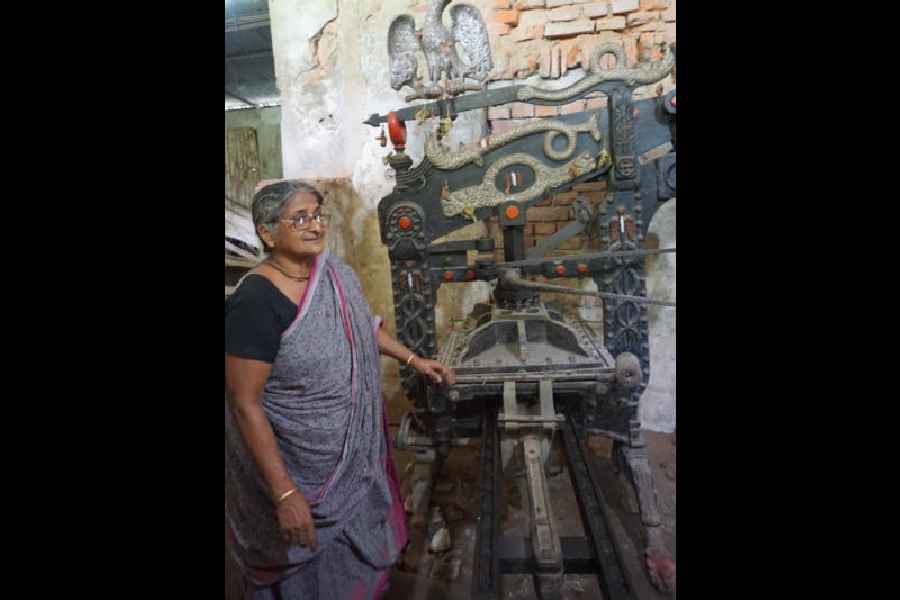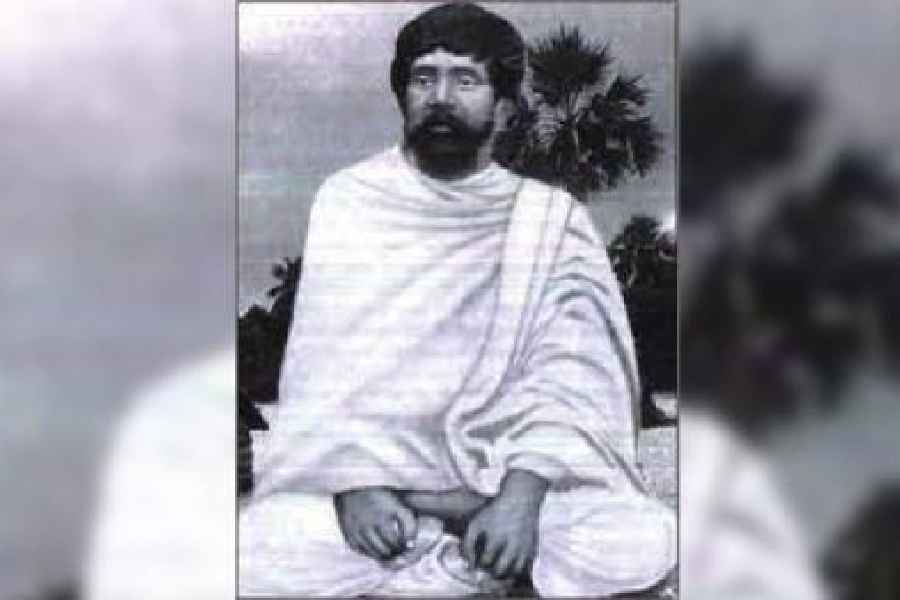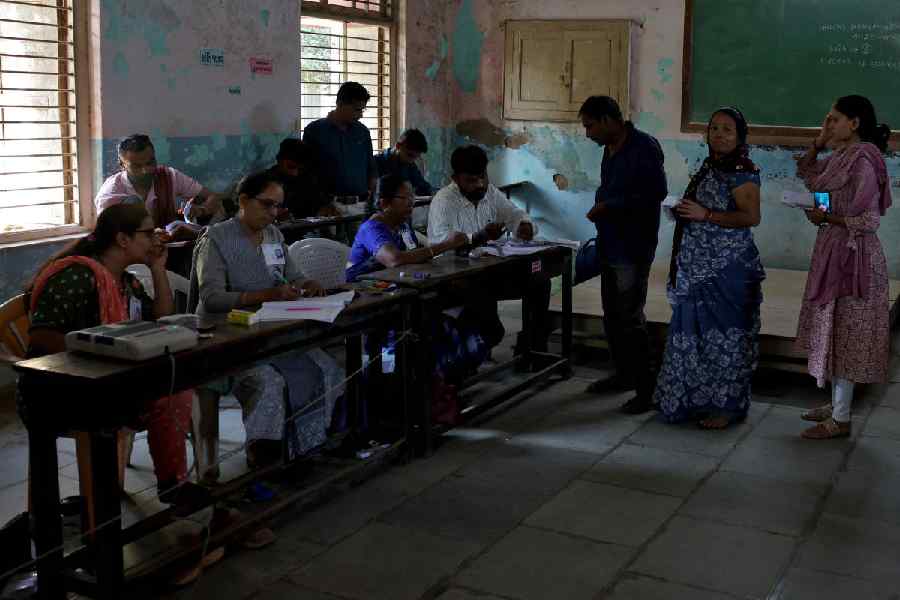The distance between Calcutta and Kumarkhali, a small town in eastern Bangladesh, is a little more than 200 kilometres. If there had been no international border and no immigration protocols, we would have reached the place in six hours. We, meaning a mixed group of journalists, social workers, artists and writers, trying to retrace the path of Kangal Harinath. The occasion for the gathering this year was his 190th birth anniversary celebrations; the host was the Kangal Harinath Smritirakkha Committee.
Harinath Majumder was a writer and composer of Baul songs. He adopted the name Kangal Harinath some what later in life, possibly when he formed the Baul group Kangal Fikirchander Dal. Kangal is Bengali for penniless or poor. The moniker had to do with his own literal state of being, but it is also possible that the man was thus foregrounding a philosophy.
One of Harinath’s many identities is that he is a pioneer of rural journalism in Bengal. He had founded the weekly Grambarta Prakashika in 1863.
Harinath had started Grambarta Prakashika to report and write about the oppression of ordinary Indians by indigo planters, zamindars and British officials, issues mainstream newspapers typically did not address. While the man himself was in Kumar- khali, the printing press was in Calcutta. It took him four days to do the commute along with all the material, and that is why Grambarta Prakashika was to begin as a monthly. Harinath travelled mostly in country boats crossing four rivers and then walked the rest of the journey.
After two years of this, press owner Girishchandra Vidyaratna suggested that Harinath buy a printing machine and set up a press in his hometown. With some help from Girishchandra, his own meagre savings from his school teacher’s job and a generous donation from a wealthy babu of Kumarkhali, Mathurnath Majumdar, Harinath bought a printing press. The machine was towed in a large goods carrying boat weaving through the network of rivers.
Our primary destination was the decrepit press in Kundupara right next to the family home. A frail woman in her late 60s welcomed us. Gita is the widow of Ashoke Majumdar, the fourth-generation descendant of Harinath. Long after Grambarta Prakashika had shut shop, Ashoke had kept the press alive by printing posters, leaflets and handbills.

18th century printing press at MNK Press of Kangal Harinath (Majumdar) at Kumarkhali, Bangladesh. Gita Majumdar, wife of late Ashok Majumdar -- fourth generation descendant of Kangal Harinath describes how the vintage press worked when Grambarta Prakashika was printed Pic credit: Prasun Chaudhuri
Gita and her son Debashis showed us the 160-year-old rare hand iron press manufactured by the British company Clymer & Dixon and now covered in rust. We also saw some of Harinath’s “handwritten reports”. Researchers and scholars had, according to the mother and son, taken away other things related to Harinath’s journalistic work. Some of these are on display at the Kangal Hari-nath Museum in Kumarkhali. “They wanted to take away the printing machine too, but we are not ready to part with it free of cost,” said Gita.
Later that day, experts from Bangladesh and India shared stories about
Harinath at the museum. How the orphan boy was brought up by his grandmother. How he couldn’t afford education beyond primary school. How that was enough for the brilliant teenager to get a job as an accountant at a cloth merchant’s shop and then at an indigo factory. Later, he started a school and even managed to get some financial support from the government.
Harinath had attempted to move to Calcutta in 1849 in his quest for higher education and a job, but his limited means forced him to return. But in Calcutta, he made acquaintance with Bengal’s intelligentsia, among them was Ishwar Gupta, the journalist-publisher of Sambad Prabhakar, the first Bengali daily.
Sambad Prabhakar was an influential platform, it raised public awareness against the Indigo Revolt. Harinath started writing for it, articles on exploited farmers in and around his hometown. But he had too many reports and not all of them found place in the paper. And that is when he decided to start his own.
Barasat-based researcher and writer Ashok Chattopadhyay, who has written a number of books on Harinath, notes the daredevilry of the man who had no hesitation criticising exploitation of the ryots by the Tagore family, especially Debendranath Tagore.
Harinath’s bitter critique of British magistrates and indigo planters made him a target of the British administration and he eventually had to stop publishing Grambarta Prakasika.
By then, however, he had groomed a new set of firebrand journalist-writers such as Jaladhar Sen, Mir Mosharraf Hossain and Akshay Kumar Maitreya and they carried on his legacy.
On Day 2 of our trip, we toured some of the spots around Kumarkhali and Kushtia, which Harinath had frequented 200 years ago when he was reporting from the field. Someone pointed out a spot at Shilaidaha Kuthi bari where he had apparently been reprimanded by Debendranath Tagore for his scathing reports against him. Legend has it that Lalan Fakir, the famous minstrel based in Kushtia, had taken Harinath’s side to voice protest against Tagore Sr.
Our last stop was the mazar of Lalan beside River Gorai, a tributary of the Padma, which Harinath frequented during his last days writing and performing songs in the Baul-Fakir tradition championed by Lalan. You would have heard one of his timeless compositions made more popular by Ray’s Pather Panchali. It runs thus: “Hari deen to gelo, sandhya holo, par koro amare... Dear Lord, the day has ebbed, it is twilight now, carry me to the other side.”










